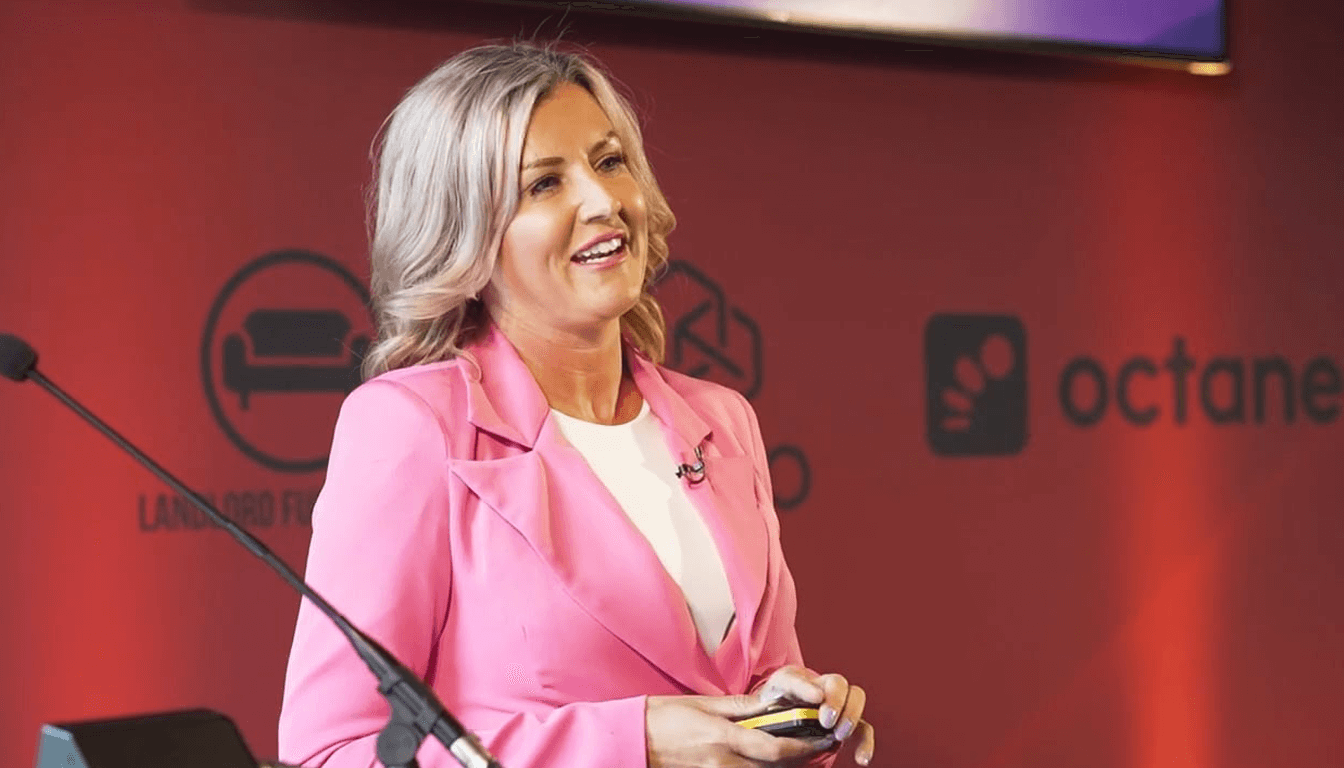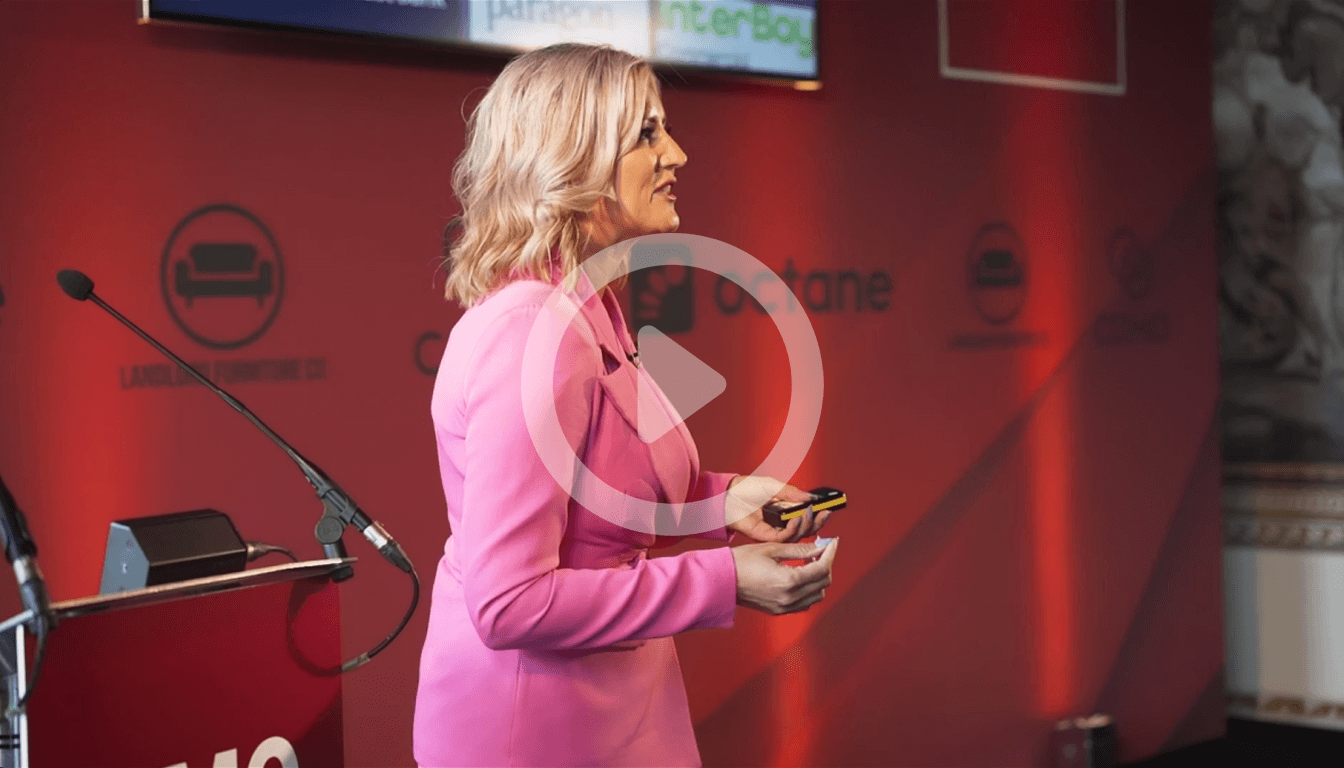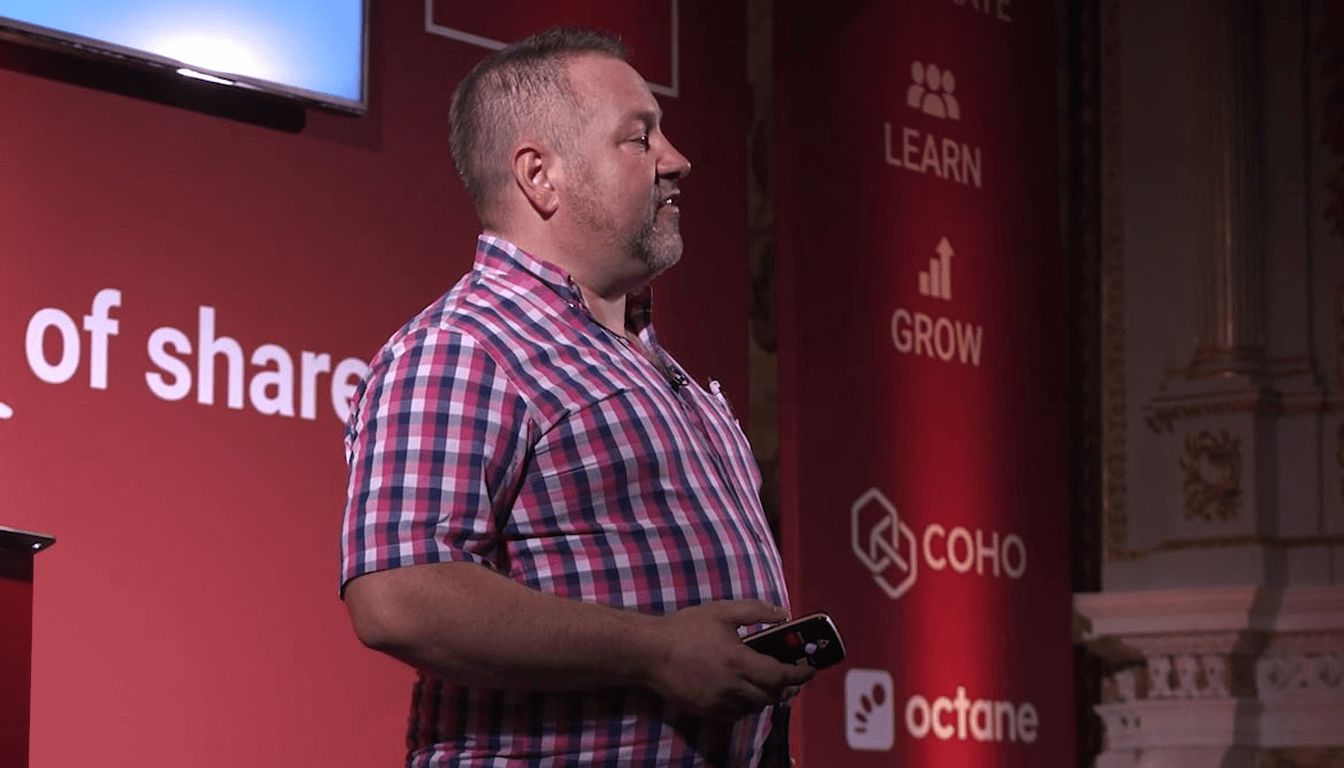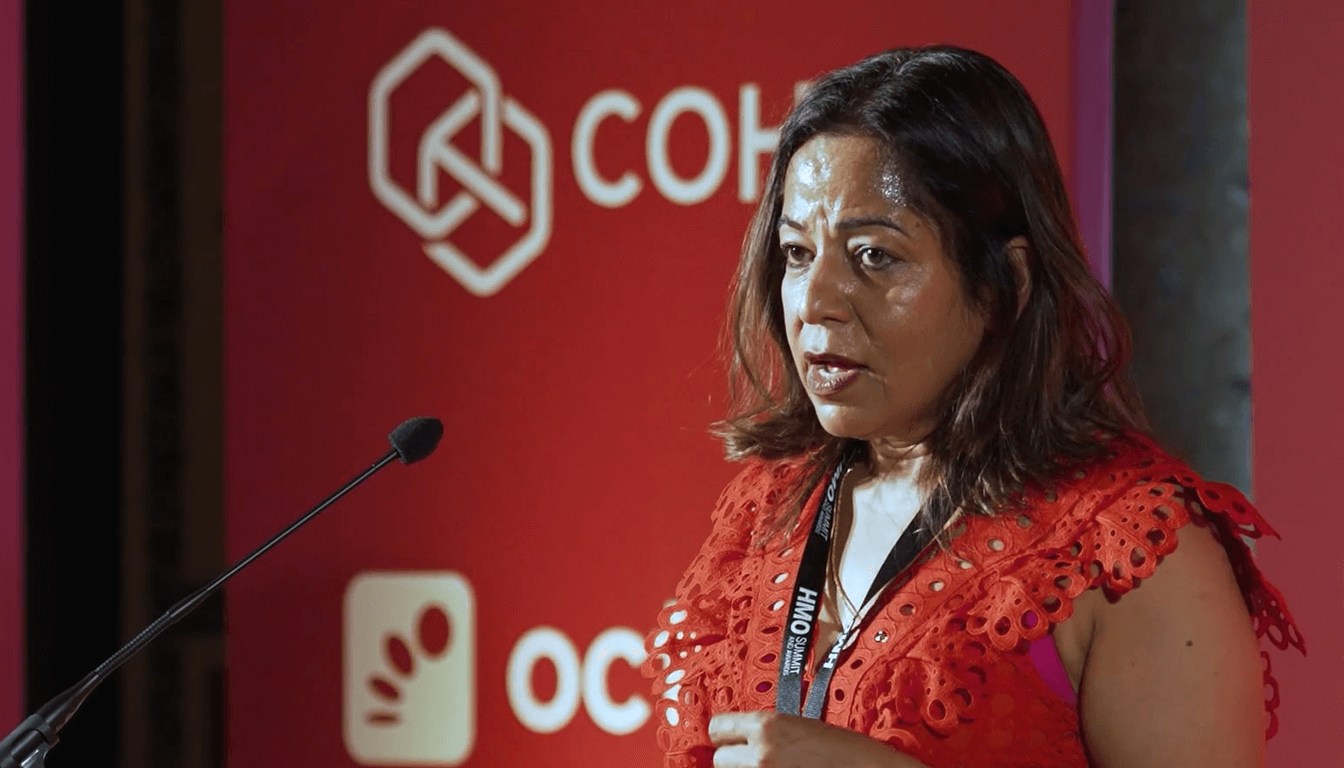Introduction: Navigating the New Normal of Property Finance
In a post-2023 property market that’s still healing from the shocks of aggressive interest rate hikes and economic uncertainty, smart investors are looking beyond traditional finance. At the HMO Summit 2023–24, Kim McGinley, founder of Vibe Finance, delivered a masterclass on how creative financing is unlocking new possibilities for HMO investors. Her insights were a blend of market realism and tactical strategy, drawn from working with hundreds of clients across the UK.
2024 may not be an easy ride—but it’s one full of opportunity for those who know where to look.
The 2024 Mortgage Market Landscape: Stability Amid Uncertainty
Compared to the chaos of 2023, the current mortgage landscape offers a breath of fresh air. Although interest rates are still somewhat volatile and swap rates fluctuate, the pace of change has slowed. We’re now operating in a low-rate/high-fee environment, with some lenders charging up to £499 to change rates mid-application—something unheard of just a year ago.
With a general election looming and international factors (like U.S. rate shifts) influencing UK trends, Kim advised caution but also optimism: “We’re all hoping for a base rate reduction this summer or autumn, which could reboot the mortgage market.”
HMO Finance Is Evolving: Lenders Now Accepting First-Time Landlords
One of the most promising trends in 2024? Lenders are becoming increasingly open to first-time HMO landlords—a shift that broadens access to more creative investment models. Additionally, more lenders are open to offering investment valuations (rather than bricks-and-mortar valuations) even on small HMOs, provided certain conditions are met.
This creates a more dynamic lending environment that rewards investors who take time to understand lender criteria and valuation pathways.
Investment Valuations for Small HMOs: When Do They Apply?
Traditionally, properties with six or fewer bedrooms—classified as small HMOs—received bricks-and-mortar valuations. But if you’re investing in a C4 planning use class in an Article 4 area, or if the property’s layout makes it uniquely suitable as a HMO (e.g., all en-suites, separated units, high-quality conversion), you may be eligible for investment valuation.
Kim named top lenders in this space:
Shawbrook Bank, Kent Reliance, Hampshire Trust Bank, Paragon, and Interbay Commercial—all of which offer investment-based valuations under the right circumstances.
Tip: Valuers’ reports, comparables, and a strong case for resale exclusively as a HMO are critical to securing these valuations.
Supported Living: A Growing Strategy in High-Yield Portfolios
Beyond traditional HMOs, supported living is fast becoming a key diversification tool for investors. Lenders are now recognizing its viability, although they often require clarity on tenant type, carer arrangements, and whether a local authority is involved.
For many investors, the model checks two boxes: social impact and high yield. But success lies in presenting a clear, compliant case that lenders can underwrite confidently.
Case Study: How a 4-Bed Became a 6-Bed HMO with Investment Valuation
Kim shared a powerful real-life example. A client bought a 4-bed terraced house and converted it into a 6-bed HMO, adding en-suites to all bedrooms and creating two self-contained studios with private gardens. Due to the bespoke layout, resale as a single dwelling was no longer viable—prompting the lender to approve an investment valuation.
This highlights a key takeaway: The more tailored and value-added your conversion, the stronger your case for creative finance.
Creative Financing Strategies You Can Use Today
1. Delayed Completions with Works in Between
This advanced strategy involves completing refurbishments between exchange and final completion. Investors inject capital into the property during this phase, allowing some bridging lenders to fund up to 100% of the purchase price—as long as the final loan is capped at 75% of the new market value.
💡 This requires precise planning, short-term finance, and evidence of value uplift.
2. Purchase Lease Options (PLOs)
This strategy gives investors the right (but not obligation) to buy a property at a pre-agreed price while renting it and earning income. One client secured a PLO at £135,000, paid £300/month rent, earned £775/month in rental income, completed refurbishments, and eventually refinanced at a value of £210,000.
✅ Result: A term loan of £157,500 (75% of new value), turning a lease into serious leverage.
3. True Below Market Value (BMV) Deals
Not every £5K discount is a BMV deal. But when it is, lenders can fund up to 90% of the purchase price, provided it remains within 75% of the current market value.
🔑 Arm’s length transactions and clear documentation are essential to secure lender confidence.
4. 100% Financing (Myth Busted)
You can’t borrow 100% of the value without collateral. The only real way this works is by offering additional security, like another property with equity. Otherwise, the myth of 100% finance remains just that—a myth.
The Truth About Specialist Finance: There Is No One-Size-Fits-All
Unlike residential mortgages, specialist property finance is not a tick-box process. Lenders assess each application on its own merits. A strong broker doesn’t just pass on forms—they build compelling proposals, highlight risks and strengths, and know which boundaries to push.
Kim emphasized this: “We know when and how to push boundaries. But we need full transparency from the investor. First impressions matter—don’t let your deal get shopped around and lose credibility.”
Key Takeaways for HMO Investors in 2024
- Work with brokers who understand creative finance—not all do.
- Push for investment valuation when the HMO conversion justifies it.
- Diversify into supported living if you want impact plus yield
- Explore non-traditional deals like lease options and delayed completions.
- Build your credibility with lenders through clear documentation and arm’s-length deals.
- Avoid the “Dave at the pub” syndrome—every deal is unique; don’t generalize based on someone else’s anecdote.
Final Thoughts: Finance Is Your Power Tool—Use It Creatively
The landscape for HMO investors in 2024 is full of nuance—but also full of opportunity. With the right broker, a clear plan, and the confidence to explore creative strategies, you can unlock capital, secure better valuations, and scale faster than you imagined.
As Kim closed her talk: “Everyone’s situation is different. Stay in your own lane. And always give us brokers what we need to help you win.”
Introduction: Navigating the New Normal of Property Finance
In a post-2023 property market that’s still healing from the shocks of aggressive interest rate hikes and economic uncertainty, smart investors are looking beyond traditional finance. At the HMO Summit 2023–24, Kim McGinley, founder of Vibe Finance, delivered a masterclass on how creative financing is unlocking new possibilities for HMO investors. Her insights were a blend of market realism and tactical strategy, drawn from working with hundreds of clients across the UK.
2024 may not be an easy ride—but it’s one full of opportunity for those who know where to look.
The 2024 Mortgage Market Landscape: Stability Amid Uncertainty
Compared to the chaos of 2023, the current mortgage landscape offers a breath of fresh air. Although interest rates are still somewhat volatile and swap rates fluctuate, the pace of change has slowed. We’re now operating in a low-rate/high-fee environment, with some lenders charging up to £499 to change rates mid-application—something unheard of just a year ago.
With a general election looming and international factors (like U.S. rate shifts) influencing UK trends, Kim advised caution but also optimism: “We’re all hoping for a base rate reduction this summer or autumn, which could reboot the mortgage market.”
HMO Finance Is Evolving: Lenders Now Accepting First-Time Landlords
One of the most promising trends in 2024? Lenders are becoming increasingly open to first-time HMO landlords—a shift that broadens access to more creative investment models. Additionally, more lenders are open to offering investment valuations (rather than bricks-and-mortar valuations) even on small HMOs, provided certain conditions are met.
This creates a more dynamic lending environment that rewards investors who take time to understand lender criteria and valuation pathways.
Investment Valuations for Small HMOs: When Do They Apply?
Traditionally, properties with six or fewer bedrooms—classified as small HMOs—received bricks-and-mortar valuations. But if you’re investing in a C4 planning use class in an Article 4 area, or if the property’s layout makes it uniquely suitable as a HMO (e.g., all en-suites, separated units, high-quality conversion), you may be eligible for investment valuation.
Kim named top lenders in this space:
Shawbrook Bank, Kent Reliance, Hampshire Trust Bank, Paragon, and Interbay Commercial—all of which offer investment-based valuations under the right circumstances.
Tip: Valuers’ reports, comparables, and a strong case for resale exclusively as a HMO are critical to securing these valuations.
Supported Living: A Growing Strategy in High-Yield Portfolios
Beyond traditional HMOs, supported living is fast becoming a key diversification tool for investors. Lenders are now recognizing its viability, although they often require clarity on tenant type, carer arrangements, and whether a local authority is involved.
For many investors, the model checks two boxes: social impact and high yield. But success lies in presenting a clear, compliant case that lenders can underwrite confidently.
Case Study: How a 4-Bed Became a 6-Bed HMO with Investment Valuation
Kim shared a powerful real-life example. A client bought a 4-bed terraced house and converted it into a 6-bed HMO, adding en-suites to all bedrooms and creating two self-contained studios with private gardens. Due to the bespoke layout, resale as a single dwelling was no longer viable—prompting the lender to approve an investment valuation.
This highlights a key takeaway: The more tailored and value-added your conversion, the stronger your case for creative finance.
Creative Financing Strategies You Can Use Today
1. Delayed Completions with Works in Between
This advanced strategy involves completing refurbishments between exchange and final completion. Investors inject capital into the property during this phase, allowing some bridging lenders to fund up to 100% of the purchase price—as long as the final loan is capped at 75% of the new market value.
💡 This requires precise planning, short-term finance, and evidence of value uplift.
2. Purchase Lease Options (PLOs)
This strategy gives investors the right (but not obligation) to buy a property at a pre-agreed price while renting it and earning income. One client secured a PLO at £135,000, paid £300/month rent, earned £775/month in rental income, completed refurbishments, and eventually refinanced at a value of £210,000.
✅ Result: A term loan of £157,500 (75% of new value), turning a lease into serious leverage.
3. True Below Market Value (BMV) Deals
Not every £5K discount is a BMV deal. But when it is, lenders can fund up to 90% of the purchase price, provided it remains within 75% of the current market value.
🔑 Arm’s length transactions and clear documentation are essential to secure lender confidence.
4. 100% Financing (Myth Busted)
You can’t borrow 100% of the value without collateral. The only real way this works is by offering additional security, like another property with equity. Otherwise, the myth of 100% finance remains just that—a myth.
The Truth About Specialist Finance: There Is No One-Size-Fits-All
Unlike residential mortgages, specialist property finance is not a tick-box process. Lenders assess each application on its own merits. A strong broker doesn’t just pass on forms—they build compelling proposals, highlight risks and strengths, and know which boundaries to push.
Kim emphasized this: “We know when and how to push boundaries. But we need full transparency from the investor. First impressions matter—don’t let your deal get shopped around and lose credibility.”
Key Takeaways for HMO Investors in 2024
- Work with brokers who understand creative finance—not all do.
- Push for investment valuation when the HMO conversion justifies it.
- Diversify into supported living if you want impact plus yield
- Explore non-traditional deals like lease options and delayed completions.
- Build your credibility with lenders through clear documentation and arm’s-length deals.
- Avoid the “Dave at the pub” syndrome—every deal is unique; don’t generalize based on someone else’s anecdote.
Final Thoughts: Finance Is Your Power Tool—Use It Creatively
The landscape for HMO investors in 2024 is full of nuance—but also full of opportunity. With the right broker, a clear plan, and the confidence to explore creative strategies, you can unlock capital, secure better valuations, and scale faster than you imagined.
As Kim closed her talk: “Everyone’s situation is different. Stay in your own lane. And always give us brokers what we need to help you win.”









